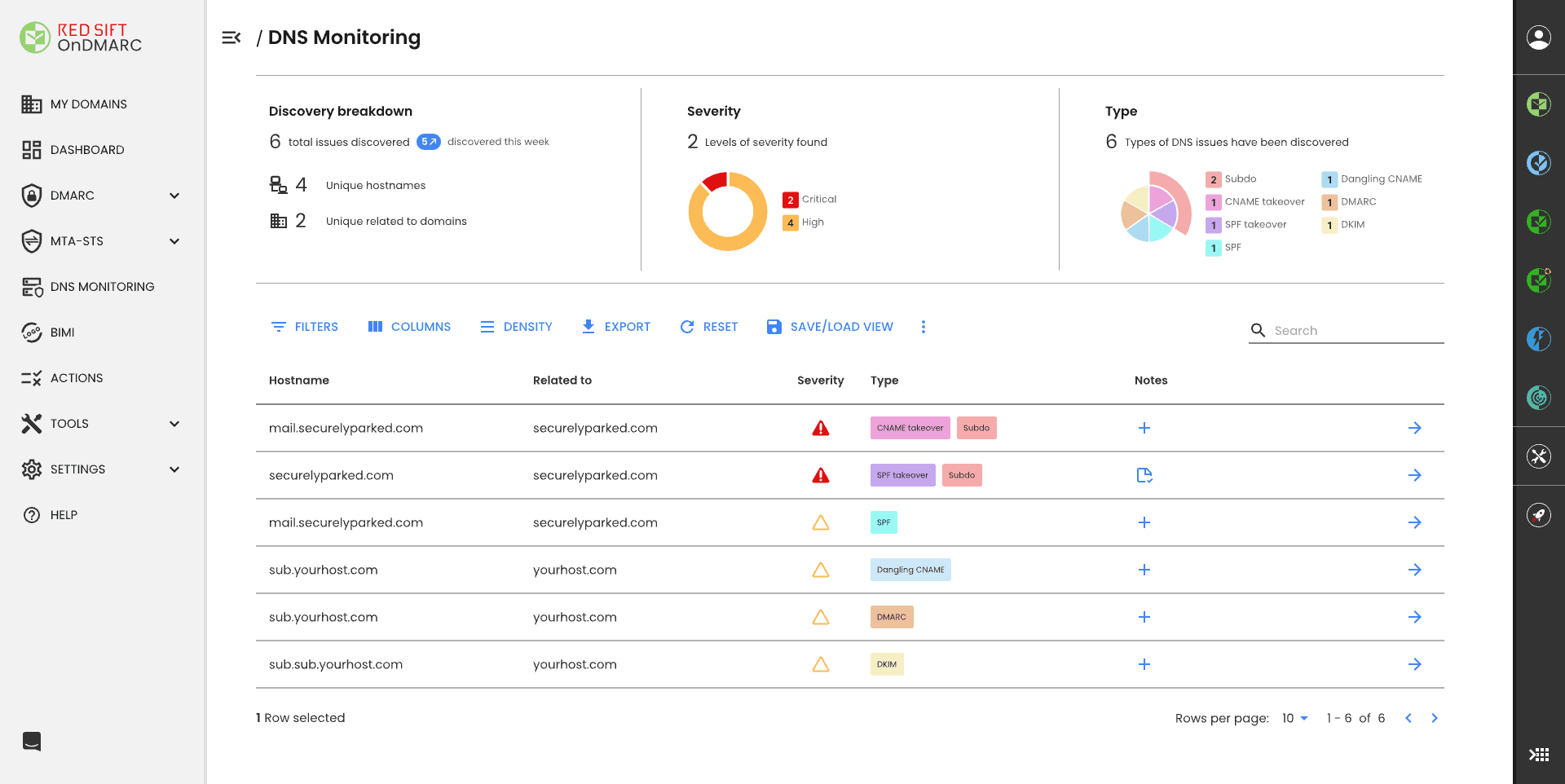Feature set
OnDMARC provides a comprehensive suite of features beyond basic DMARC reporting. Its dynamic services allow for the management of SPF, DKIM, DMARC, MTA-STS, TLS-RPT, and BIMI, all from a unified platform. We found the Investigate tool particularly useful for instant deliverability diagnostics.
Beyond core authentication, OnDMARC offers forensic reporting, API access for integration, and smart alerts to proactively notify us of issues. Higher tiers include advanced features like Radar Pro for threat intelligence, DNS Guardian, Event Hub for SIEM integration, and Global IP Lookup. It is a feature-rich, managed solution.
Docker DMARC Reports, as an open-source project, offers a more barebones feature set. Its primary function is to parse DMARC aggregate (RUA) reports and display them in a basic web interface. We appreciate that it provides a foundational view of DMARC compliance, showing email sources and authentication results.
However, it lacks advanced features like forensic reporting (RUA reports only), active spoof detection, and integrated management of other email authentication protocols. It relies on the user to manually configure DNS records and does not offer dynamic SPF flattening, BIMI support, or MTA-STS. It is a simple tool for basic DMARC visibility.











































 4.9 / 5(94)
4.9 / 5(94)
 0 / 5(0)
0 / 5(0)



